
Can You Hear Me Now?
By Kevin Hoagland
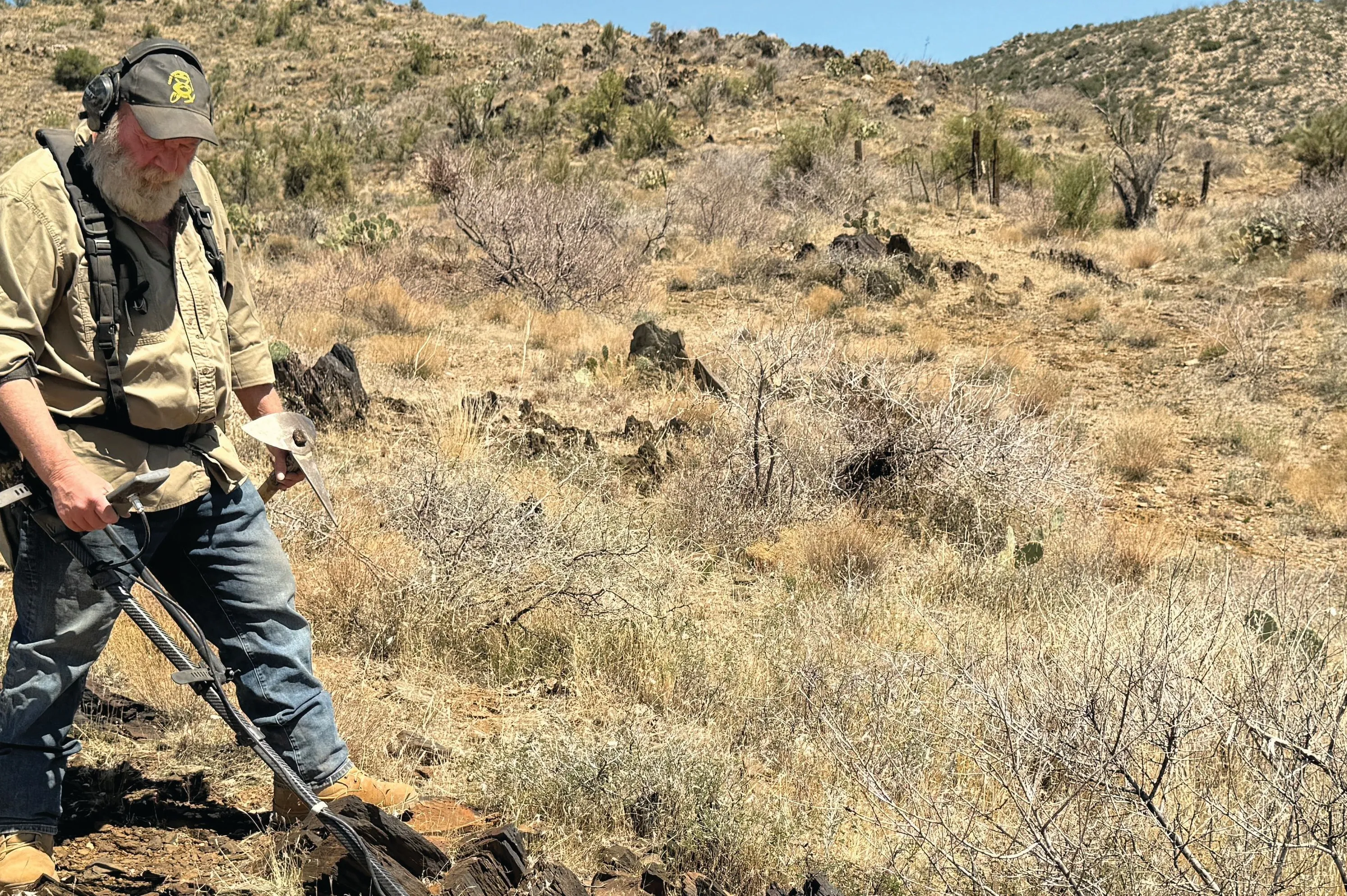
ASK KEVIN
Submission from Robert S., an avid new gold detectorist
"Kevin, I am older and new to gold prospecting with a detector. We met at a meeting I was at and you were the guest speaker. I took notes but didn't ask questions, which I regret now. I'm having a few problems. First off, I wear hearing aids so I can't wear headphones. And when I do what you teach about keeping the coil on the ground, and the perfect threshold, I can't hear everything that you taught us."
Robert,
No worries, my friend, I've got some options for you. I am going to address your issues but if you don't mind, I'm going to use this opportunity to hopefully help a few others as well. So, buckle up, this is not going to be a short answer.
We've all heard that line from a cellphone provider; it was funny at first then most likely became truly ad nauseam. I get it, but how about your detector, can you hear every sound?
If not, there is a good chance that you are walking over gold. I know, because I've done it as well and more than once.
Hearing Aid Solutions for Detectorists
For Robert and others who wear hearing aids, there are a few options. But first, you need to identify your type of hearing loss - overall or tonal. If overall hearing loss is you, here are a couple of options.
Overall Hearing Loss
- Hearing Aid-Compatible Headphones: There are hearing aid-compatible headphones that do an excellent job. However, there are a few things to look for. Make sure they are NOT noise canceling, and make sure they are wired headphones. Or if wireless, they are compatible for your detector or can be easily adapted to your detector. This means a trip to the store with your detector. Don't be embarrassed to walk into a Best Buy with your detector and ask for help matching headphones to your detector and you.
- Amplified Headphones or Inline Amplifier: I prefer and recommend the inline amp option over the headphones because we all have our favorite headphones. If you are like me, I wear detector-specific headphones that were called Nugget Buster NDT made by DetectorPro. Unfortunately, it appears that I will be choosing a different DetectorPro headphone if I ever need to replace my current set. Seems the Nugget Busters have been discontinued. If that day ever comes, I'll move over to the Gray Ghost NDT or Black Widows by the same company. These are great for adding an inline amp to increase the overall volume. This means you're not wearing your hearing aids while detecting. These amps range in price from $20 to $150. And this is one area that I will say you truly get what you pay for.
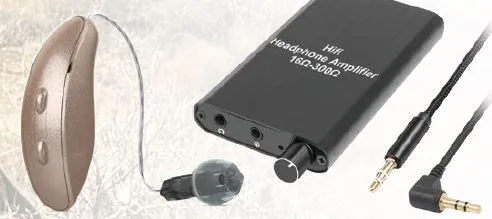
Left: A Bluetooth-enabled unit is a fantastic option for hearing aid users - but make sure your hearing aids can actually pair with your detector's Bluetooth, or you may need a different solution. Right: If you have general hearing issues, an inline amp might be all you need to stay in the zone.
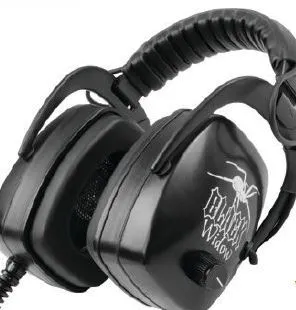
Detector-specific headphones for enhanced audio.
Tonal Loss of Hearing
This is the majority of folks with hearing loss and is one that I wish more detector manufacturers would address. For gold detecting, there are only a couple of detectors that are being built today that address this, and they do an outstanding job of allowing the user to match their hearing to the detector. Here are some options:
- Inline Graphic Equalizer: These have become harder to find over the years but there are used ones that are still available. Koss made one that I sold exclusively in my shop years ago. It was a three-band unit, and I have seen them for sale on a number of different sites.
- Wait for a While: I was approached by a company to test their new tone control a couple of months back after one of their teams sat in on a seminar I held about matching detectors to the user and the ground. If this happens, their plan is a single-dial potentiometer, powered by a couple of AA batteries, to adjust the tone. It is not a simple undertaking, as I shared with them the frequency ranges that would have to be covered. I have faith in their team, they are all audiophiles, and I feel like they will do it better than it has been done in the past.
- New Hearing Aids: The most expensive option and maybe the best is a new set of hearing aids that address your tonal hearing loss and can be easily paired to your detector using the detector's wireless system or a good Bluetooth aftermarket system that will work on any detector. I have met a lot of people over the last few years that have gone this route, and they are extremely happy with the results.
So aside from the Bluetooth-compatible hearing aids, all of these other options allow you to ditch the hearing aids while detecting and making sure you do not miss those faint sounds of tones that for me have many times over been gold nuggets.
Why is this so important to me? Simple, I've watched detectorists walk over nuggets in a test field and it was because of four things. Any one of these can cause you to miss gold, and the more you don't set it up right, the more the odds of nailing a nugget go down.
Coil Control
Keeping your coil on the ground is imperative to success. And I mean on the ground, wearing out the coil cover. If you have a hard time with this one, watch the video below, which shows two of the best-selling VLF detectors missing a half-gram gold nugget with the coil less than 2 inches off the ground.
Demonstration of VLF detectors missing a half-gram gold nugget when the coil is raised.
If the coil is being run right, then you will be sliding it across the ground and this, my friends, generates a lot of noise, making headphones a must.
There are a few books that have been written in the past that I have enjoyed reading but always disagreed with the titles. "Zip Zip" by Larry Sallee was a great training book for the White's detectors but the title is something that has confused coil swingers for years. Most of the big or very deep nuggets that I have found with White's detectors and now the Garrett/White's 24K have been barely audible. They were nothing more than a slight change in the threshold sound, and definitely not a "Zip Zip" sound. As I always say, "Coil Covers are cheap. Missing gold nuggets isn't."
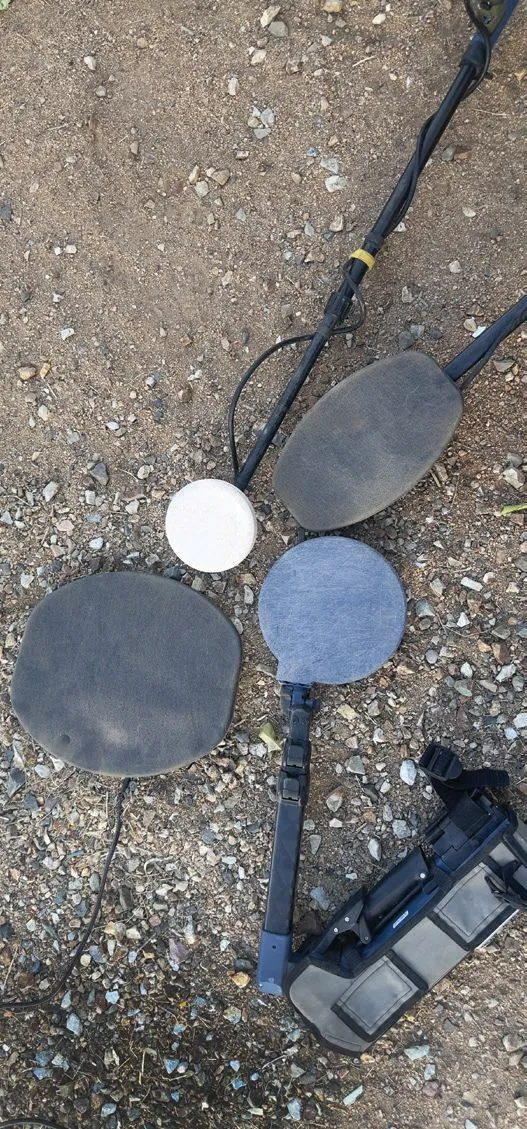
This is where my coils live; on the ground, getting beat up. Coil covers are cheap - missed nuggets aren't.
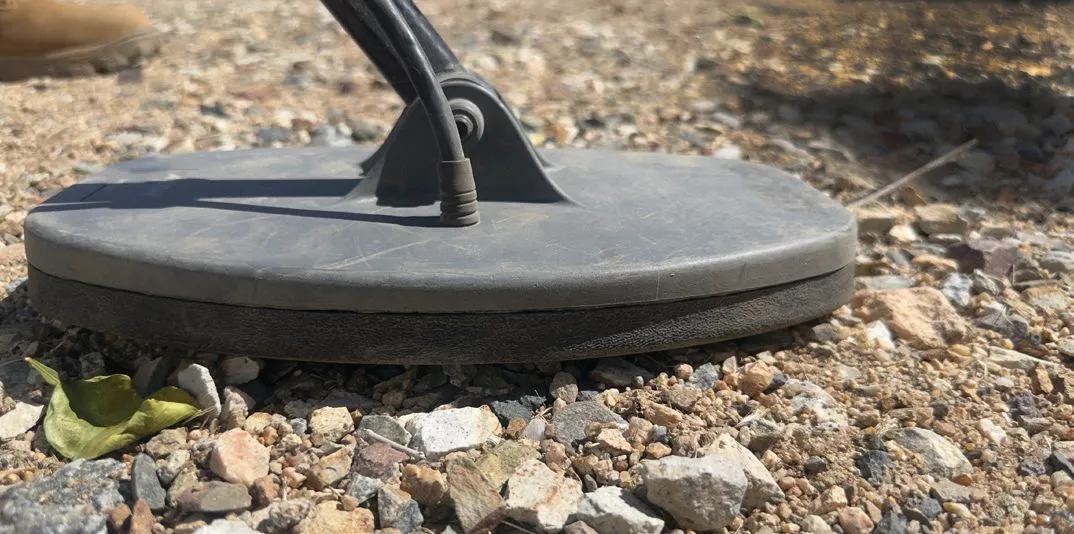
Close-up of a detector coil in action.
Ground Balance
Ground balancing a metal detector is nothing more than making the ground under the coil disappear. When you swing the coil, any changes on the ground will show as a target. It is very important to keep your detector ground balanced at all times to the ground that you are working.
The process of ground balancing is pretty straightforward: you will pump the machine up and down a few inches above the surface of the ground while either making manual adjustments or using a system like ground grab to set the ground balance of the detector. If you have an automatic ground balance with tracking, then the machine does everything for you.
With that said, let's look at the different types of ground balancing detectors. The three that are the most common are manual ground balance, automatic ground balance, and automatic ground balance with tracking.
- Manual Ground Balance: Not surprising to those of you that know me, I prefer a manual ground balance detector; it gives me complete and total control over my detector and how it sees the ground. However, there is what some would call a downside: you will be constantly physically ground balancing. In some of the areas that I detect, that means adjusting my ground balance after every swing.
- Auto Ground Balance with Tracking: If your detector is an automatic ground balance with tracking, understand that at all times your detector is reading the ground, which is not a bad thing at all. It is a great choice for those getting into detecting, and there really isn't much of a downside to these detectors today. There is one thing, though, that I have found to be almost a constant with any of these types of detectors: please be aware of the silent signals. This happens because either the target is too small or too deep or both for the detector to read its signaling coherently, at which point it just gives up and goes silent. It's the detector's way of saying that something is there; it just doesn't have enough information. I have dug a lot of nuggets that were silent until I dug a little.
- Auto Ground Balance: This is very popular and an excellent choice, but I do have one issue, especially for new users, and that is the name "automatic ground balance." For most people, auto means auto, just like your car’s automatic transmission: you put it in R to back up and D to go forward. In reality, it is a manual ground balance detector with a button you press instead of a knob or a rocker switch to bring it back into balance with the ground, mostly called Ground Grab or GG. The downside: drift is the biggest factor for me. I have found that Auto GB is usually not as reactive as manual, unless I am always checking my ground balance constantly (which I do no matter what detector I am using). Gang, it ain't an auto transmission. Treat it like a manual ground balance that takes a little less work.
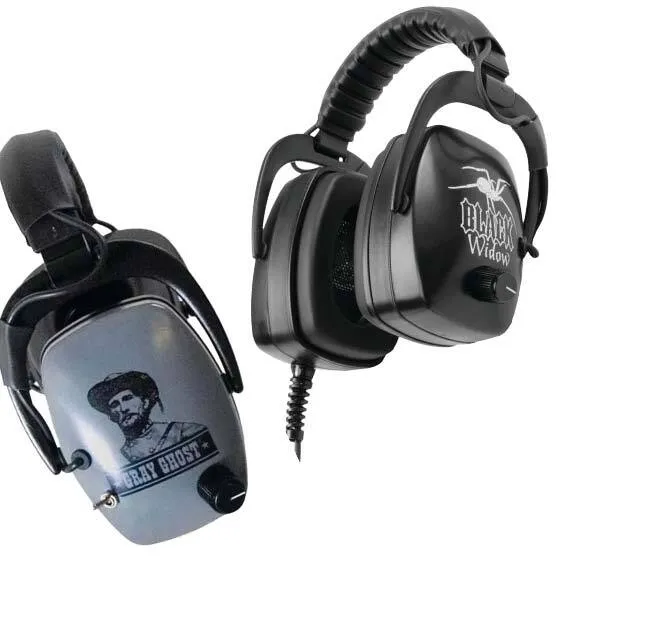
Headphones are personal. I've run Nugget Busters and Black Widows for years - and plan to keep using them for years to come.
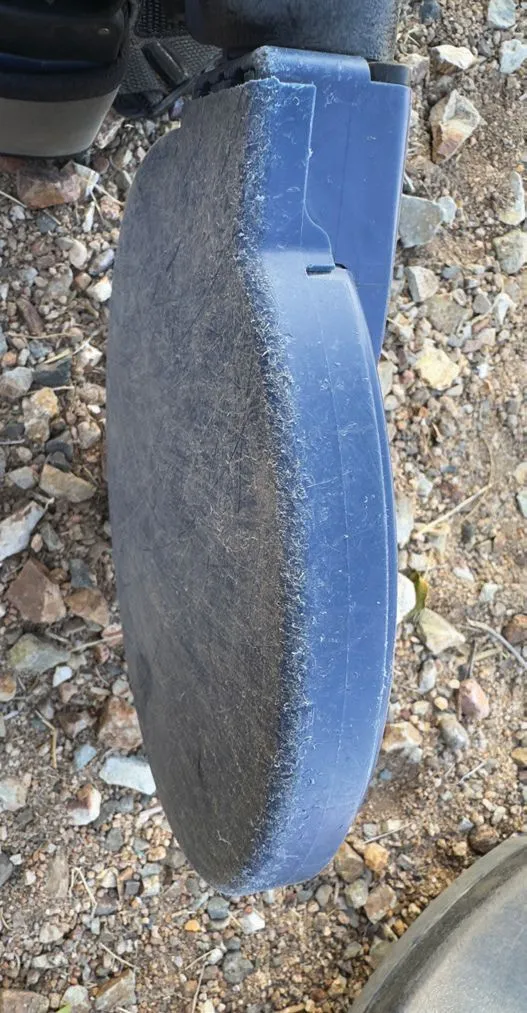
My SDC loves dragging the ground - this cover was brand new a week ago.
Threshold
The threshold is the voice of your detector. It will tell you everything you need to know and can even tell you if you’re swinging your detector correctly. A properly set threshold on a VLF detector should sound like a mosquito buzzing by your ear. It may be a little fast, it may be a little slow, but it will always have that repeatable humming signal. For the Pulse Induction crowd, it’s more like a wave than a mosquito signal. Listen for this wave to be equal in audio in your ears.
It is about more than a mosquito or a wave; it’s about finding a rhythm with your detector. With a proper threshold set, you are not just listening for target sounds but for changes in rhythm. Most of the time, these changes are so subtle, you may walk over a target and then realize something’s there, back up a little, dig a little, and out comes a golden nugget.
"If you’re only listening for loud zippers from your detector, you’re walking over gold."
Sensitivity
In my years of experience, sensitivity is the most important setting on a detector. You can have a threshold slightly off, and your ground balance can creep a little from perfect, but if your sensitivity is not set to the ground you’re working on, you can and will miss targets, including gold nuggets. Quick, 30,000-foot explanation: Sensitivity is about RX, Receive, not TX, Transmit. This means every click up on sensitivity means you’re amplifying the ground around your target and, of course, your target too. And unless the target is huge, I’ll say you’re amplifying a lot more ground than you are target.
In 2010, Garrett made what I consider a groundbreaking statement by saying (paraphrasing): “sometimes less is more, and you have to let the detector tell you if you’re setting sensitivity properly.” In essence, Garrett said, “Hey, thanks for buying the Garrett AT Gold. It’s a great detector, and we are very proud of it. Oh, by the way, we have no idea how YOU should set your sensitivity because we don’t know where you’re detecting.”
Learn to set your detector to the ground you’re working on, not a preset based on test field data around the world. I want my detector set specifically to the ground I’m working on, not an average of groundsheet data.
When everything is right (all of the above) and you can hear even the smallest changes in your detector, when it asks you, "Can you hear me now?" the answer will always be, you bet I do!
By Kevin Hoagland, Executive Director of Development for the GPAA. Contact: khoagland@goldprospectors.org or 928-264-1293.
Editor’s Note: Have a gold prospecting question? Send it to content@goldprospectors.org for expert advice and a chance to be featured in Gold Prospectors magazine!







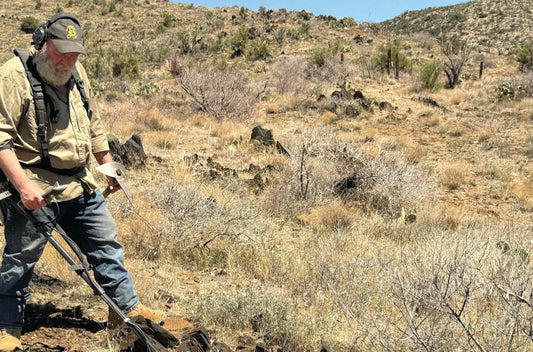

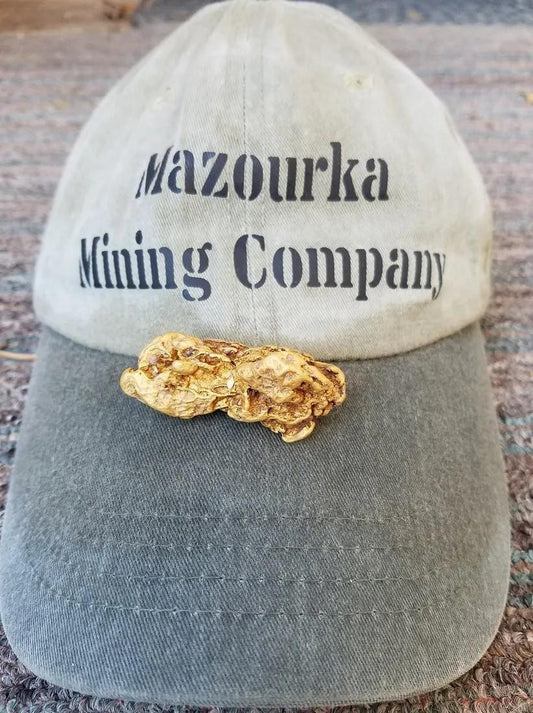

0 comments